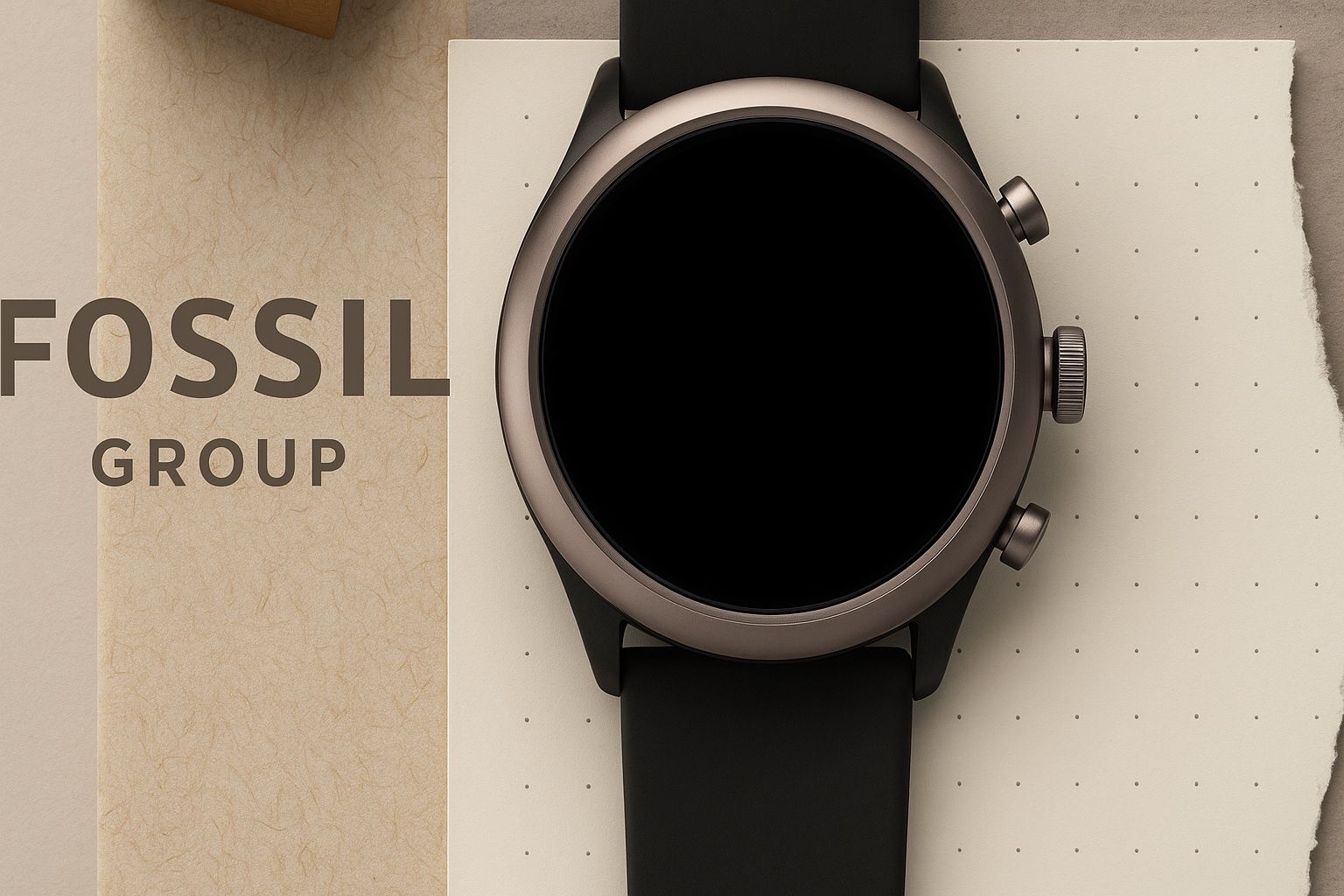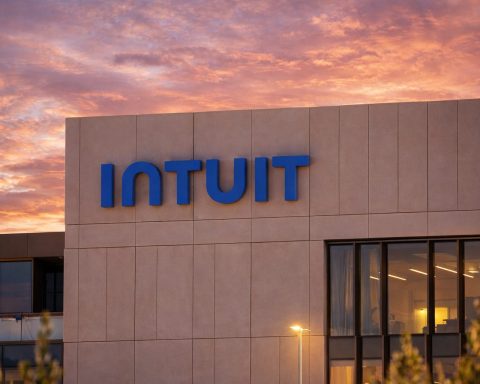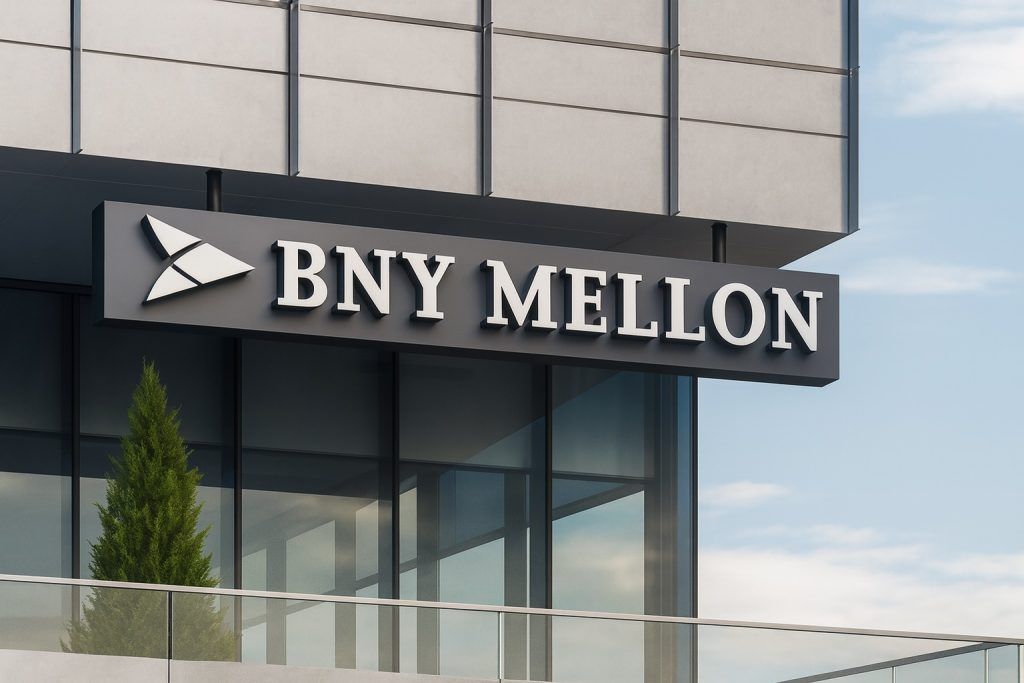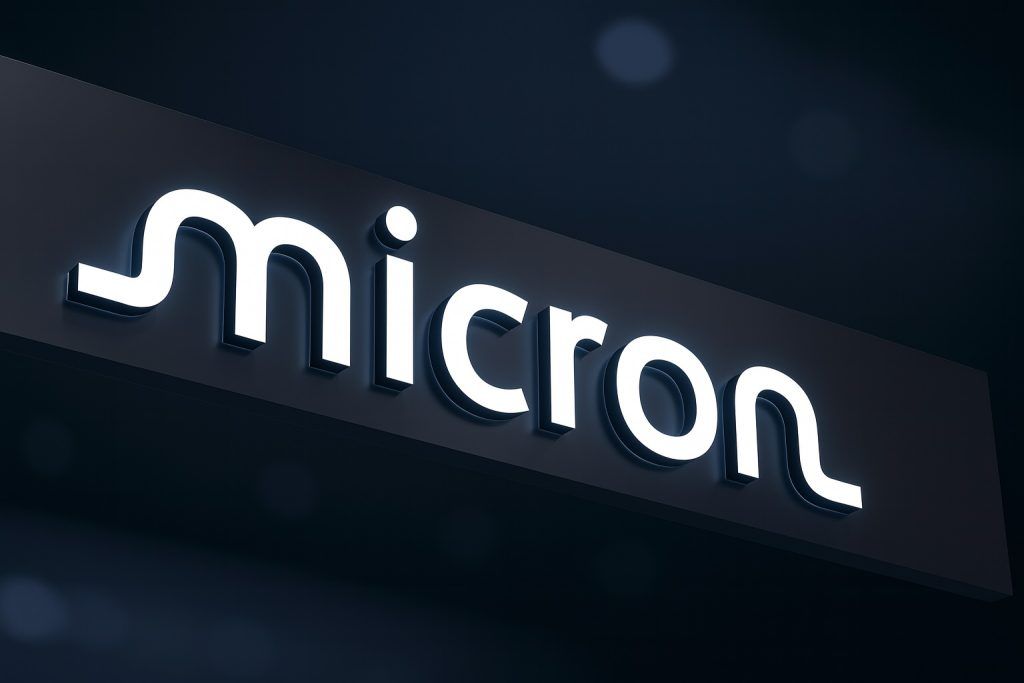- Shares Whipsaw: Fossil Group stock surged over 40% to a multi-year high (closing at $3.75 on Oct 15) amid upbeat turnaround news, then plunged 40% the next day on renewed debt worries [1] [2].
- Volatile Rally: Year-to-date, FOSL is up 62% (vs. a 12.5% industry decline), vastly outperforming peers thanks to improved liquidity, cost cuts, and brand revamps [3]. The stock’s recent spike was fueled by a surprise profit and rumors of a lucrative India unit IPO [4] [5].
- Turnaround Progress: Q2 2025 results showed net sales down 16% to $219 million but gross margin jumping ~480 basis points to 57.4% [6] [7]. Fossil even swung to an $8.5 million operating profit from a $34 million loss a year ago [8], thanks to aggressive cost cuts and exiting unprofitable lines.
- Restructuring & Debt: The company is restructuring $150 million in debt due 2026. It launched an exchange offer to swap old notes for new 2029 notes plus stock warrants [9], and secured about 72% bondholder participation by mid-October [10]. A deadline extension to try to reach full agreement spooked investors, highlighting lingering debt concerns [11].
- India IPO Buzz: Fossil is reportedly exploring an IPO of its Indian subsidiary to raise $300–$400 million by selling ~25% stake [12]. This could value Fossil India at over $1 billion – far above Fossil’s entire market cap – tapping into booming demand in a key growth market [13] [14].
- Market Context: Fossil’s pivot away from smartwatches underscores the wearables shake-up. The global smartwatch market saw its first sales dip in 2024 [15], with Apple Watch still dominant, while Fossil refocuses on its fashion watch heritage. Traditional timepieces are enjoying a “connected chic” revival blending style and tech [16], and Fossil aims to capitalize on that trend.
- Analyst & Insider Sentiment: Analysts have turned more optimistic – Zacks even upgraded FOSL on “early success” in the turnaround and “renewed brand energy” [17]. Company insiders are signaling confidence too (CEO Franco Fogliato bought shares recently [18]). Still, short interest hovering near 9% of float reflects some skepticism among bears [19].
- Looking Ahead: Experts caution that volatility remains high. Near-term, all eyes are on Fossil’s next earnings (early November) and whether it finalizes the debt deal. Some technical forecasts see room for further upside – one model even projects 50%+ gains in the next 3 months – but with equally high risk [20] [21]. The mid-term outlook hinges on Fossil sustaining its cost discipline, reviving sales through innovation, and proving it can thrive in a smartwatch world without actually making one.
Fossil Stock’s Rollercoaster 2025 Performance
Fossil Group’s stock has been on a wild ride in 2025, with dramatic swings that grabbed Wall Street’s attention. After years of decline, FOSL shares staged a comeback this year – up over 60% year-to-date, vastly outperforming the broader apparel/accessories sector [22]. The rally hit a fever pitch in mid-October: on October 15, Fossil’s stock skyrocketed 41.5% in a single day, hitting $3.89 intraday (a multi-year high) and closing at $3.75 [23]. This surge was seemingly out of nowhere, and traders scrambled to pinpoint the cause. As it turned out, a confluence of positive news – from an unexpected profit to buzz about an India spinoff – ignited speculative buying in the long-struggling watchmaker [24] [25].
However, the euphoria was short-lived. Within 24 hours, Fossil provided a stark reminder of its challenges: before the market opened on October 16, the stock plunged about 40% to nearly $2.20 [26]. The trigger was a company announcement extending the deadline on a critical debt exchange plan, which raised fresh concerns about Fossil’s financial footing. In effect, the same debt restructuring that had given investors hope now injected uncertainty, causing a swift reversal of the previous day’s gains [27]. By midday Oct 16, FOSL was seesawing wildly as the market tried to digest the mixed signals.
This kind of volatility – soaring one day, plummeting the next – underscores both the opportunity and risk surrounding Fossil Group right now. On one hand, the stock’s sharp rise shows investors are willing to bid up shares on any encouraging news. (Notably, even after the pullback, FOSL is still well above its 2024 lows – it traded under $1 last year amid bankruptcy fears.) On the other hand, the gut-wrenching drop highlights lingering anxieties about debt and turnaround execution. “High volatility in Fossil Group’s stock price… this stock is considered ‘high risk,’” one technical analysis noted after the whiplash week [28]. Short-term traders have flocked to FOSL for its big swings, but long-term investors remain cautious until the company’s footing is more stable.
Surprise Profit and Turnaround Progress Fuel Optimism
Beneath the stock’s rollercoaster moves are some genuine green shoots in Fossil’s business. The company – known for fashion watches and accessories under brands like Fossil, Skagen, Michele, and licensed names (Michael Kors, Diesel, Kate Spade, etc.) – has been executing a major turnaround plan in a bid to revive growth and restore profitability. And as of mid-2025, there are tangible signs of progress.
Second quarter 2025 results, reported in August, surprised many observers. Fossil’s net sales came in at $219 million, down about 16% year-over-year, continuing a multi-year revenue slide [29]. But the quality of sales improved dramatically: gross profit margins expanded to 57.4%, up nearly 5 percentage points from a year ago [30], thanks to fewer discounts and a shift back to full-price selling. Fossil also achieved positive adjusted operating income of $4 million, versus a significant loss in the prior year [31] [32]. In fact, on a GAAP basis the company notched an operating profit of $8.5 million in Q2 – a stark reversal from the $34 million operating loss in Q2 2024 [33] [34]. This was Fossil’s first profitable quarter in some time, and it came despite lower revenue, indicating that cost cuts and efficiency moves are paying off.
What changed? Under new CEO Franco Fogliato (a retail veteran who took the helm in Sept 2024) and a refreshed management team, Fossil has been aggressively restructuring. The company unveiled a “Transform and Grow” agenda in 2023 and a refined Turnaround Plan in 2025 focusing on three pillars: refocus on core products, tighten cost structure, and strengthen the balance sheet [35] [36]. In practice, this has meant tough decisions like laying off staff, closing stores, and even exiting the smartwatch category to concentrate on Fossil’s strength in traditional watches. Over the past year, Fossil shuttered 50+ underperforming stores (ending 2024 with 248 stores globally) and slashed operating expenses by nearly one-third [37]. In February 2025, it conducted layoffs and shifted some overseas markets to distributor partnerships – moves expected to save about $100 million in annual costs [38]. “Looking at our direct-to-consumer business, we believe there is a significant opportunity to become smaller but much more profitable,” CEO Fogliato told analysts, emphasizing a pivot to leaner operations [39].
Fossil also quit making its own digital-display smartwatches – a notable retreat, given it had invested in WearOS smartwatches for years. Management acknowledged that competing with Apple and Samsung in high-tech wearables was a losing battle, so Fossil is now recommitting to what it does best: stylish analog and hybrid watches, leather goods, and jewelry. This decision did dent sales (the company said exiting wearables and closing stores cut sales by about 6 percentage points in late 2024 [40]), but it boosted margins by eliminating a low-profit line. “We’ve moved into a full-price model,” CFO Randy Greben noted, explaining that Fossil is keeping its products out of bargain bins to rebuild brand equity [41]. The strategy seems to be working – Fossil’s operating loss narrowed significantly in the first half of 2025, and the company actually raised its full-year outlook slightly, now projecting a mid-teens percentage sales decline (better than earlier guidance of a high-teens drop) with break-even to slightly positive operating margin by year-end [42].
Fogliato struck an optimistic tone on the Q2 earnings call: “We’re extremely pleased… We’ve refocused on our core and improved our profitability,” he said, highlighting that traditional watch sales were rebounding as fashion-conscious consumers rediscover timepieces as personal style statements [43]. “The traditional watch becomes an accessory, a way to express themselves,” Fogliato observed of younger customers returning to analog watches [44]. Fossil also cited success with some recent marketing campaigns – notably a collaboration with pop star Nick Jonas, who features in Fossil’s global ads. This kind of brand investment has “resulted in stronger consumer engagement and better brand resonance,” analysts at Zacks noted, pointing to higher product visibility and sales from these campaigns [45].
All told, the turnaround plan appears to be inching Fossil back toward stability. The company’s adjusted EBITDA turned positive in the first half of 2025, and Fossil ended Q2 with a solid liquidity cushion (~$110 million in cash) [46]. It has also secured a new $150 million revolving credit line to support operations [47]. The major remaining piece of the puzzle? Tackling the debt coming due – and that brings us to Fossil’s restructuring efforts.
Debt Restructuring: A Necessary Hurdle
While Fossil’s core business is improving, the company is still burdened by debt that it must refinance to survive. Fossil has $150 million of 7.0% Senior Notes due in 2026 – a hangover from tougher times – and given the company’s past losses, it’s unlikely to simply pay that off from cash flow. Thus, in September Fossil launched a complex debt restructuring plan aimed at pushing out the debt’s maturity and shoring up the balance sheet [48].
Under this plan (announced Sept 9, 2025), Fossil is essentially asking its bondholders to exchange their 2026 notes for a new package of securities. For those who participate, Fossil is offering new 9.5% First Lien notes due 2029 (for those willing to inject some new money) or 7.5% Second Lien notes due 2029 (for others), plus warrants for Fossil stock as a sweetener [49] [50]. In plain English, bondholders would trade in their soon-to-mature notes for longer-dated notes (with higher interest and collateral rights) and get a bit of equity upside if the company recovers. Concurrently, Fossil is raising about $32.5 million of new capital through a rights offering tied to this deal – existing noteholders can buy additional “first lien” notes (and get some shares) to give the company fresh funds [51] [52]. The goal is to buy Fossil more time (extend debt to 2029) and beef up liquidity so it can execute the turnaround without a solvency crisis.
Crucially, this exchange offer needed a high participation rate to succeed – Fossil set a minimum threshold (likely 95% or more of notes) or else it might have to pursue a court-supervised process in the UK to cram down holdouts [53]. Initially, response was strong: by early October, about 72% of the notes had been tendered into the exchange [54]. To encourage the rest, Fossil twice extended the deadline (most recently to Oct 15) and even scheduled a UK court hearing as a backup plan [55] [56]. The extension announced on Oct 15 – which caused that big stock drop – suggests some bondholders were still hesitating, possibly negotiating for better terms. Indeed, when Fossil pushed the deadline past Oct 15, 2025, it admitted it hadn’t yet reached full agreement [57]. Investors took this as a red flag that the refinancing was not a done deal, hence the sell-off.
That said, Fossil emphasized that it is making progress. By Oct 15, the company had locked in support from nearly three-quarters of its bondholders [58], and it convened a UK court hearing that day to approve a meeting for the remaining creditors [59] [60]. In other words, Fossil is prepared to use a UK restructuring proceeding to force through the deal if needed – a strategy other companies have used to avoid U.S. bankruptcy. The company’s official statement cautioned that if the plan isn’t consummated, Fossil would face the “potential delays and significant costs of alternative transactions…which may impact the company’s ability to continue as a going concern” [61] [62]. In simpler terms, failure is not really an option – Fossil must restructure this debt, or its turnaround could be derailed.
For stockholders, this debt saga is a double-edged sword. Successfully refinancing the notes would lift a huge cloud over Fossil – it would improve liquidity, remove the near-term default risk, and allow management to focus on the business. In fact, analysts have cited the “comprehensive debt refinancing plan” as a key factor giving Fossil “increased financial flexibility” to execute its strategy [63]. But until the deal is sealed, uncertainty will hang over the stock. The dramatic moves in mid-October show how sensitive FOSL shares are to any hint of trouble (or success) with the debt exchange. Investors will be watching closely for an update; a completed exchange (or positive news of high take-up) could spark another relief rally, whereas further delays or complications might spook the market again.
India IPO Talk: Unlocking Hidden Value?
Amid the focus on cost-cutting and debt, Fossil got an unexpected jolt of positive buzz from overseas. Bloomberg reported that Fossil is exploring an IPO for its Indian subsidiary, aiming to raise roughly $300–$400 million by listing it on the Indian stock market [64] [65]. The report, released on Oct 15, cited sources saying Fossil could sell up to 25% of “Fossil India” in such an offering [66].
For context, Fossil has built a solid business in India – it sells Fossil watches and licensed brands through stores and online in the fast-growing South Asian market. In fact, Fossil India generated about ₹8.68 billion in revenue (≈$98 million) and ₹704 million profit (~$8 million) in the year ending March 2024 [67]. Those numbers are relatively small in the global picture (roughly 8% of Fossil’s total sales), but growth prospects in India are huge, with a young population and rising middle class embracing branded accessories.
The mere possibility of an India IPO electrified investors because it could unlock significant value. If Fossil can float 25% of its Indian arm for ~$400 million, that implies the whole subsidiary might be worth $1.2–1.6 billion. That’s an eye-popping figure considering Fossil Group’s entire market cap, even after the recent surge, is only a few hundred million dollars. It suggests the market might be dramatically undervaluing Fossil’s sum-of-the-parts – or conversely, that Indian equity investors are willing to pay a premium for growth. No wonder FOSL stock spiked on this news. As Seeking Alpha noted, shares “swapped hands at a new multi-year high” that morning, up over 44%, amid the India IPO talk [68].
To be clear, the India IPO is not confirmed – Fossil has declined to comment on the speculation [69]. Deliberations are ongoing, and plans could change. However, many global companies have recently listed their Indian units to capitalize on robust local investor demand (the article cited Hyundai and LG Electronics’ successful India listings) [70]. For Fossil, such a move could raise much-needed cash (potentially allowing more debt paydown or investment in core brands) and spotlight the value of a business segment that’s thriving. India is one of Fossil’s best-performing markets – traditional watches are experiencing “strong rebound trends in India,” according to analysts [71] – so spinning it off at a high valuation might not only bring funds but also bolster Fossil’s narrative that its turnaround has bright spots.
Investors are likely to keep a keen eye on any developments here. Even the hint of a strategic move like this – essentially monetizing part of the company – has injected new optimism around a stock that had been left for dead. It also underscores a broader point: Fossil’s brand portfolio and global footprint may contain hidden gems that the market hasn’t fully appreciated.
Wearables Wars: Fossil vs. Apple & Co.
Any discussion of Fossil’s future must reckon with the broader market context – especially the competition between traditional watchmakers and the tech giants pushing smartwatches. In the past decade, Apple Watch (along with Samsung’s Galaxy Watch, Google’s Fitbit/Pixel Watch, and others) captured consumers’ wrists, leading many to predict the demise of analog watches. Fossil, which built its name on fashionable analog timepieces, found itself caught in the middle, even acquiring a fitness tracker startup (Misfit) in 2015 and investing heavily in smartwatches to try to keep up.
But by 2024, the landscape had shifted again. Interestingly, global smartwatch shipments actually declined ~7% in 2024 – the first-ever drop for the category [72]. Even market leader Apple saw a 19% fall in Apple Watch units that year [73] [74]. Analysts pinned the dip on a lack of revolutionary new features and a longer upgrade cycle (consumers weren’t rushing to buy the latest watch without major improvements) [75]. Meanwhile, traditional watchmakers weren’t standing still: some doubled down on what smartwatches can’t offer – luxury mechanics, jewelry appeal, long battery life – and found a niche of resilient demand.
Fossil appears to have read these trends and decided to chart a different course. By quitting the crowded smartwatch hardware market, Fossil conceded the tech race to Apple, Samsung, Garmin and others. Instead, it’s focusing on style, heritage, and hybrid tech (e.g. watches that look analog but quietly track fitness or give notifications). This aligns with a mini-resurgence of interest in conventional watches among millennials and Gen Z. As one tech site put it, 2025’s wearables trend is about “connected chic – blending tech-driven wellness with personal style” [76]. Many consumers are choosing hybrid or stylish digital watches that prioritize fashion, or they alternate between an Apple Watch for workouts and a dressy Fossil or Michael Kors watch for going out.
Still, Fossil faces intense competition on multiple fronts:
- In wearable tech, Apple remains the 800-pound gorilla with roughly one-third of the global smartwatch market (and an outsized share of profits). Garmin has locked up the fitness enthusiasts with its high-end sports watches boasting week-long battery life. Samsung and Google are fighting for the Android watch user base. Fossil’s absence from new smartwatch launches means it forgoes that growth segment – a calculated trade-off to focus on profitability.
- In fashion and luxury watches, Fossil competes with the likes of Swatch Group (which owns brands like Tissot, Omega, and Swatch itself), Movado (another watch licensor/producer), and countless fashion labels that release their own licensed watches. Swatch Group, for instance, has seen success with products like the Omega-Swatch MoonSwatch collaboration – showing there’s still strong consumer appetite for unique analog pieces. Fossil’s edge is its stable of licensed brands (from Armani to Tory Burch) and its design capabilities at affordable price points. However, the Swiss giants and even smart-jewelry upstarts will vie for the same wrist real estate.
- In retail channels, Fossil’s pullback on its own stores puts more emphasis on wholesale and e-commerce partnerships. This pits the company against other accessory brands for shelf space at department stores and against direct-to-consumer upstarts online. Additionally, large retailers (and e-comm sites like Amazon) have their own private-label accessories. Fossil’s plan to be “less promotional” and elevate its brand may be tested in an environment where discounting is rampant to attract shoppers [77].
Industry observers say Fossil’s best bet is to carve out a differentiated position: capitalize on its fashion credentials and global licenses while letting tech giants dominate pure smartwatches. There are encouraging signs. For instance, Fossil noted average unit retail prices have been rising, and consumers respond well to refreshed designs of its classic models [78] [79]. The company is also leaning on its heritage – re-launching beloved watch lines (like the retro-inspired “Heritage” series) – to tap into nostalgia and authenticity, which younger buyers appreciate [80]. These efforts, combined with strategic influencer tie-ins and limited editions, aim to keep Fossil’s offerings “cool” even as Apple Watches proliferate.
Crucially, the overall watch market is not a zero-sum game. Analysts expect single-digit growth to return to smartwatches in 2025 as new health features (like blood pressure and sleep apnea monitoring) roll out [81]. But that doesn’t necessarily mean traditional watches will decline – they might stabilize or even grow in certain segments (especially emerging markets and luxury fashion). Fossil’s India strategy exemplifies this: India’s young consumers are embracing watches as status and style symbols, fueling strong sales of Fossil’s analog brands there [82]. Fossil wants to be the affordable luxury choice for those customers.
In summary, Fossil is trying to balance old and new – doubling down on fashion and brand storytelling to differentiate itself from the tech competition. It’s a challenging road, but if successful, Fossil could occupy a profitable middle ground: not quite a tech gadget, not quite high luxury, but a hybrid of style and function that has its loyal audience.
Analyst Voices and Investor Sentiment
Wall Street’s view on Fossil Group has evolved from deep skepticism to cautious optimism, albeit with plenty of caveats. A year ago, few analysts bothered to even cover FOSL (the company was verging on penny-stock territory). Now, after the turnaround strides, we’re seeing some upgrades and positive commentary emerge – though still from a small pool of observers.
For example, Zacks Investment Research recently highlighted Fossil as a potential buy, noting the stock’s strong YTD performance and improved fundamentals. Zacks credited Fossil’s “improved liquidity through debt refinancing, operational efficiencies, cost controls, product innovation and brand revitalization” for the remarkable 62% share price surge in 2025 [83]. In early July, at least one analyst upgraded FOSL’s rating to “Outperform,” with the upgrade “reflecting early success in its turnaround plan, improved margins and renewed brand energy,” according to a report on Yahoo Finance [84]. Essentially, some experts now believe Fossil may have bottomed out and is on a sustainable upswing – a notable shift in sentiment from the gloom that surrounded the stock in recent years.
Industry analysts also applaud certain strategic moves. Fossil’s emphasis on balance sheet repair has been well-received: “The company has made notable progress, including a comprehensive debt refinancing plan, which enhances liquidity and supports long-term growth,” one analyst wrote, praising Fossil’s focus on strengthening its finances [85]. There’s also recognition of Fossil’s marketing pivot – using global celebrities and upping its social media game. “High-impact campaigns featuring icons like Nick Jonas [have led to] stronger consumer engagement,” the Zacks report observed, linking this to better sales momentum in key regions [86]. Analysts see these efforts as shoring up Fossil’s brand in an era where relevance is key.
That said, no one is declaring victory yet. Plenty of skepticism remains. Some analysts point out that Fossil’s revenue is still declining (down mid-teens this year) and that the company hasn’t proven it can generate consistent growth in a tough environment. “Challenges persist,” the Zacks report cautioned, citing weakness in Europe and China and competitive pressures from larger, more agile players, including e-commerce-focused rivals [87]. In other words, Fossil’s turnaround could still falter if, say, a recession hits consumer spending or if Apple Watch innovations suddenly render fashion watches “old news” again. Execution risk is also top of mind – management must flawlessly carry out cost reductions without damaging brand experience, and simultaneously spark consumer demand with the right products.
On the investor sentiment side, it’s a tale of two camps. Institutional investors largely steered clear of FOSL during its darkest days; many big funds dumped the stock when it crashed below $5 a few years ago. Those who remained or bought in at the lows have enjoyed large percentage gains this year. Some value-oriented small-cap funds likely see Fossil as a speculative turnaround play – attractive due to the low valuation (even now FOSL trades under 1x book value [88]) and the potential that earnings could rebound sharply. The fact that insiders have been buying doesn’t hurt either. CEO Franco Fogliato, for instance, purchased 250,000 shares of Fossil stock on the open market in the past six months [89], a vote of confidence that the new chief is putting his money where his mouth is.
Retail investors have also rediscovered Fossil. The stock’s sudden spikes and low absolute share price make it a frequent topic on trading forums and social media. At one point, FOSL even had a bit of meme-stock moment (back in early 2021 it surged wildly amid a Reddit-fueled short squeeze). While it’s not in meme territory now, the recent volatility has day traders circling for quick momentum trades. That can add to the stock’s swings – both up and down – as sentiment on platforms like StockTwits or Reddit can turn on a dime with each news development. Currently, the sentiment seems tentatively positive but highly reactive to headlines.
Notably, short sellers have been increasing their bets against Fossil during its latest run-up – perhaps viewing the sharp rally as overdone. As of late September, roughly 4.7 million FOSL shares were sold short, about 9% of the public float [90]. This short interest rose nearly 50% from mid-August levels [91], indicating some skeptics are doubting the stock’s lofty new heights. A high short interest can set the stage for further volatility: if Fossil delivers good news (say, a smooth debt deal or better-than-expected holiday sales), those shorts might rush to cover, potentially fueling another spike. Conversely, if turnaround hopes dim, short sellers could profit as the stock slides. It’s a dynamic to watch.
All told, the investor mood on Fossil is improving but still mixed. There’s a growing belief that the company will pull through – as evidenced by analysts upgrading the stock and insiders buying – yet there’s also caution due to Fossil’s history and remaining hurdles. The rest of 2025 will be critical in validating the bullish thesis.
The Road Ahead: Cautious Optimism
Looking forward, the key question is: Can Fossil’s comeback continue? In the short term, a lot hinges on forthcoming events and catalysts:
- Q3 2025 Earnings: Slated for early November (the company typically reports around the first week of November), this will give a fresh read on sales trends and holiday season prep. Fossil has guided for a steep sales decline for the full year, but any indication that trends are improving (or margins expanding further) could boost confidence. Conversely, if Q3 shows unexpected setbacks – e.g., weak demand in China or Europe – the stock could react negatively. Management’s commentary on how the turnaround initiatives are tracking will be parsed closely.
- Debt Exchange Completion: Investors are eagerly awaiting news that the exchange offer closed successfully. A final announcement could come any day. If Fossil can announce, “We’ve restructured the notes – we’re funded through 2029,” it removes a massive overhang. That alone might re-rate the stock higher, as bankruptcy fears would ebb. Keep an eye out for any 8-K filings or press releases on this front. However, if the process drags on or hits a snag, expect renewed volatility.
- Holiday Sales and 2026 Outlook: Fossil’s Q4 (holiday quarter) is typically its largest. A return to growth in Q4 2025 – or even flat sales with solid profit – would powerfully underscore that the turnaround is real. Additionally, any early guidance or hints for 2026 will influence medium-term forecasts. Analysts will want to see that Fossil can stabilize revenues in 2026 and perhaps even grow again by 2027 (recall the company’s target of >$800 million in net sales by 2027 with mid-single-digit margins [92]).
- Macro Factors: Broader economic conditions – inflation, consumer spending, currency exchange rates – will play a role. Fossil has significant international business, so a strong U.S. dollar can hurt reported sales. Conversely, easing inflation and robust consumer confidence would be tailwinds for discretionary purchases like watches and handbags.
- Potential Strategic Moves: Apart from the India IPO idea, could Fossil pursue other strategic actions? For instance, selling a non-core brand, or forming a partnership with a tech firm to license smartwatch tech (instead of doing it in-house)? These are speculative, but any such moves could be catalysts. The India IPO chatter shows management is open to creative ideas, which investors find encouraging.
From a stock price perspective, expect the ride to remain bumpy. Technical analysts note that Fossil’s shares are in a short-term uptrend but are prone to large swings. One analysis on Oct 15 pointed out that the stock was trading well above its moving averages and even above its upper Bollinger Band – a sign it was overbought in the very near term [93]. Not surprisingly, a pullback followed. Support levels around $3.10 and $2.80 (where trading volume has clustered) could be floors if the stock slides further [94]. On the upside, if Fossil breaks above ~$4.00 again with conviction, technical charts suggest it could run higher. In fact, a popular trading model projected the stock “to rise 51% during the next 3 months” given the current momentum, with an expected range of $3.55 to $6.12 in that timeframe [95]. That is a wide range – underscoring the uncertainty. No one should misinterpret these projections as guarantees; they merely illustrate the potential volatility and reward if things go right (and the risk if things go wrong).
In summary, Fossil Group, Inc. in late 2025 is a company at a crossroads. The hard work of restructuring is well underway: costs are down, the business is refocusing, and debt is close to being managed. The company’s brands still resonate (especially internationally), and even in a smartwatch era, people haven’t stopped buying Fossil’s products – they just needed a spark of innovation and better execution. Now, with expert opinions cautiously tilting positive and a bit of investor enthusiasm back in the mix, Fossil has a chance to script a true comeback story.
But the next chapters depend on execution. Can Fossil maintain financial discipline while reigniting demand? Will its bet on traditional watches and accessories pay off enough to offset lost smartwatch revenue? If Fossil continues to deliver improving results and sheds its debt burden, the stock could have more room to run – perhaps reclaiming levels once thought unattainable when it traded under $1. If not, however, the company could stumble under competitive and financial pressures, and recent gains might evaporate.
For now, the outlook is cautiously optimistic. As one retail analyst quipped, “Fossil is no longer a ticking time bomb – it’s starting to look like a ticking turnaround.” The coming months will show whether that turnaround keeps ticking in the right direction, or if unforeseen challenges wind the company back down. Investors and watch enthusiasts alike will be watching closely – pun intended.
Sources: Direct links to all referenced information are provided throughout the article for further reading and verification, including official press releases, financial news outlets, and expert analysis [96] [97] [98] [99] [100] [101] [102] [103] [104], among others. This report aggregates information from Fossil Group’s statements and earnings calls, Bloomberg/ET (India IPO) [105], Retail Dive and Investopedia (turnaround and layoffs) [106] [107], Seeking Alpha/AInvest (market reactions) [108], Zacks Equity Research [109] [110], and official filings [111] [112] to present a comprehensive, up-to-date overview of Fossil Group’s stock situation as of October 16, 2025.
References
1. stockinvest.us, 2. www.finanznachrichten.de, 3. www.nasdaq.com, 4. www.ainvest.com, 5. economictimes.indiatimes.com, 6. www.investing.com, 7. www.investing.com, 8. www.ainvest.com, 9. www.chartmill.com, 10. www.ainvest.com, 11. www.finanznachrichten.de, 12. economictimes.indiatimes.com, 13. economictimes.indiatimes.com, 14. economictimes.indiatimes.com, 15. ts2.tech, 16. ts2.tech, 17. www.nasdaq.com, 18. www.nasdaq.com, 19. finance.yahoo.com, 20. stockinvest.us, 21. stockinvest.us, 22. www.nasdaq.com, 23. stockinvest.us, 24. www.ainvest.com, 25. economictimes.indiatimes.com, 26. www.chartmill.com, 27. www.finanznachrichten.de, 28. stockinvest.us, 29. www.investing.com, 30. www.investing.com, 31. www.investing.com, 32. www.investing.com, 33. www.ainvest.com, 34. www.ainvest.com, 35. www.nasdaq.com, 36. www.nasdaq.com, 37. www.ainvest.com, 38. www.retaildive.com, 39. www.retaildive.com, 40. www.retaildive.com, 41. www.investing.com, 42. www.investing.com, 43. www.investing.com, 44. www.investing.com, 45. www.nasdaq.com, 46. www.investing.com, 47. www.nasdaq.com, 48. www.chartmill.com, 49. www.chartmill.com, 50. www.chartmill.com, 51. www.globenewswire.com, 52. www.globenewswire.com, 53. www.globenewswire.com, 54. www.ainvest.com, 55. www.finanznachrichten.de, 56. www.finanznachrichten.de, 57. www.finanznachrichten.de, 58. www.ainvest.com, 59. www.finanznachrichten.de, 60. www.finanznachrichten.de, 61. www.finanznachrichten.de, 62. www.finanznachrichten.de, 63. www.nasdaq.com, 64. economictimes.indiatimes.com, 65. economictimes.indiatimes.com, 66. economictimes.indiatimes.com, 67. economictimes.indiatimes.com, 68. seekingalpha.com, 69. economictimes.indiatimes.com, 70. economictimes.indiatimes.com, 71. www.nasdaq.com, 72. ts2.tech, 73. ts2.tech, 74. ts2.tech, 75. ts2.tech, 76. ts2.tech, 77. www.retaildive.com, 78. www.nasdaq.com, 79. www.nasdaq.com, 80. www.nasdaq.com, 81. ts2.tech, 82. www.nasdaq.com, 83. www.nasdaq.com, 84. nz.finance.yahoo.com, 85. www.nasdaq.com, 86. www.nasdaq.com, 87. www.nasdaq.com, 88. www.investing.com, 89. www.nasdaq.com, 90. finance.yahoo.com, 91. www.marketbeat.com, 92. www.investopedia.com, 93. www.ainvest.com, 94. stockinvest.us, 95. stockinvest.us, 96. stockinvest.us, 97. www.finanznachrichten.de, 98. www.investing.com, 99. www.ainvest.com, 100. economictimes.indiatimes.com, 101. www.retaildive.com, 102. www.investing.com, 103. www.nasdaq.com, 104. www.nasdaq.com, 105. economictimes.indiatimes.com, 106. www.retaildive.com, 107. www.investopedia.com, 108. www.ainvest.com, 109. www.nasdaq.com, 110. www.nasdaq.com, 111. www.finanznachrichten.de, 112. www.globenewswire.com







